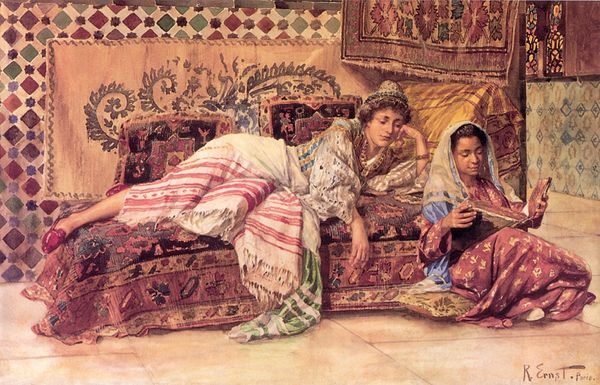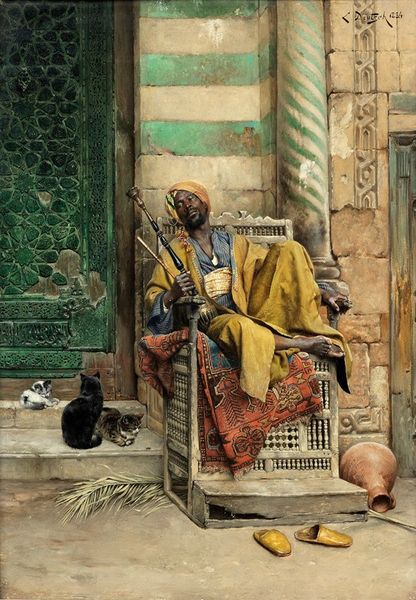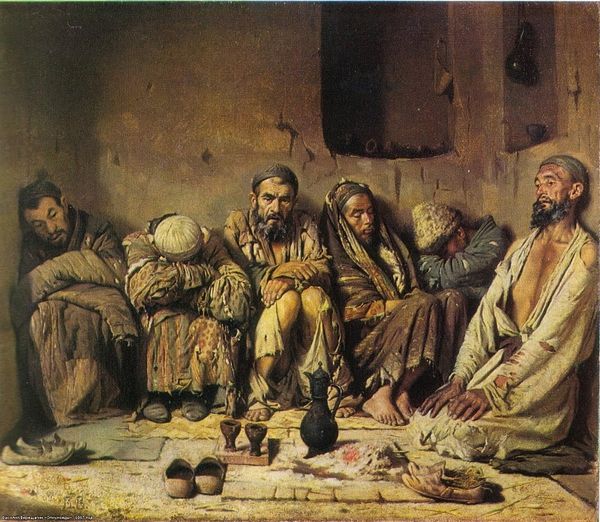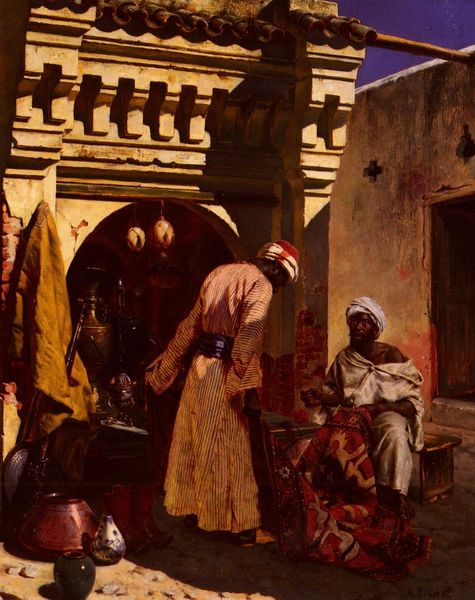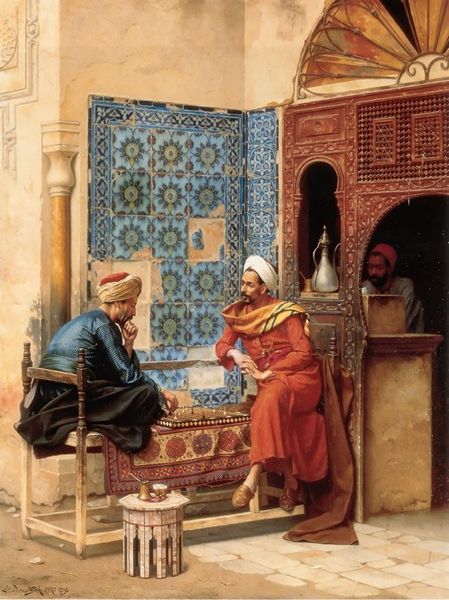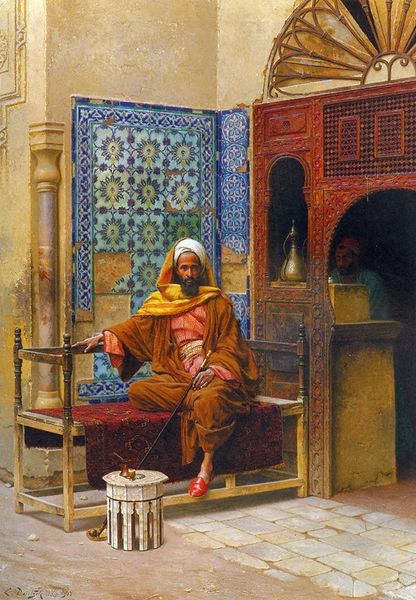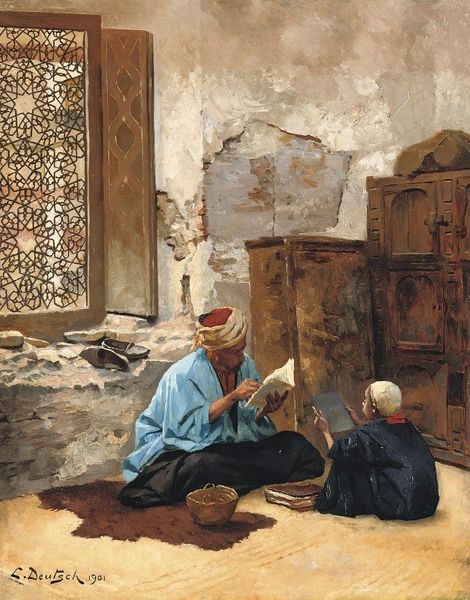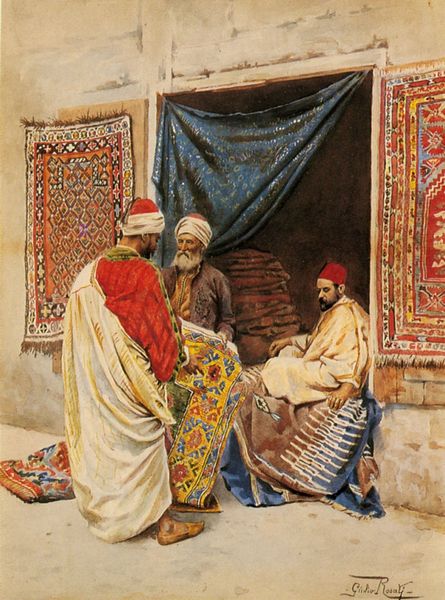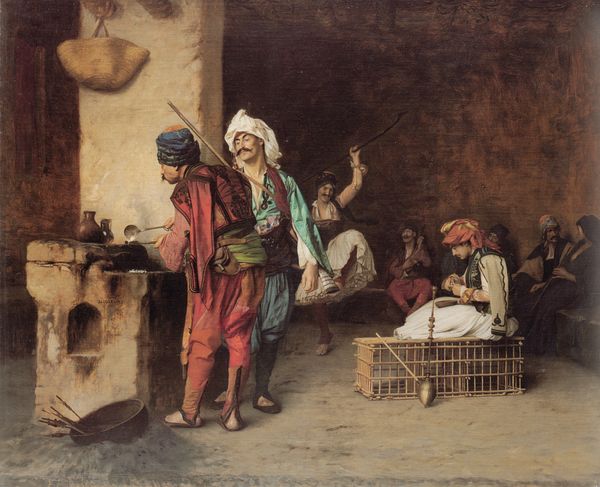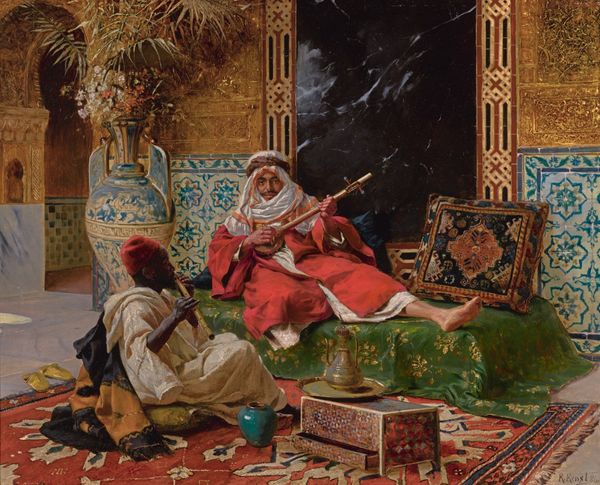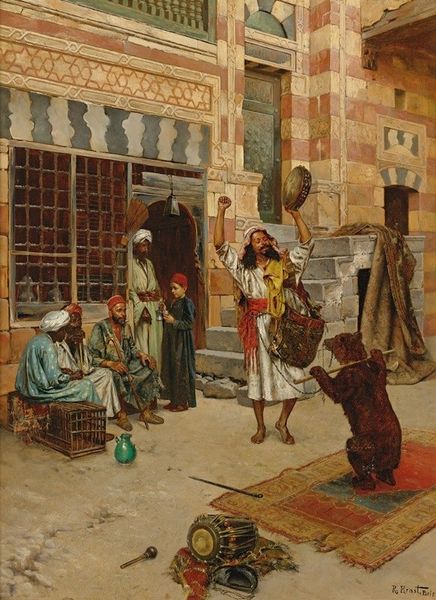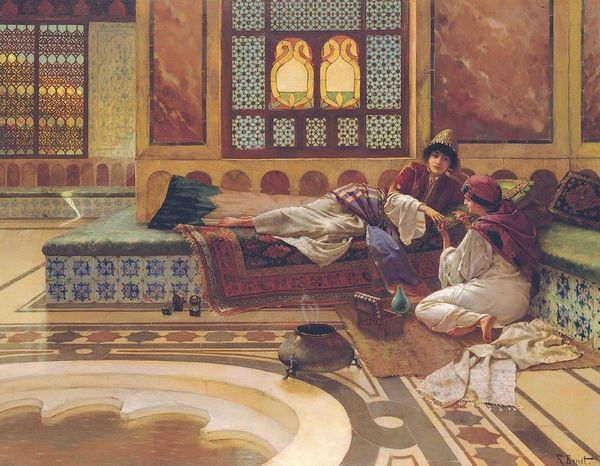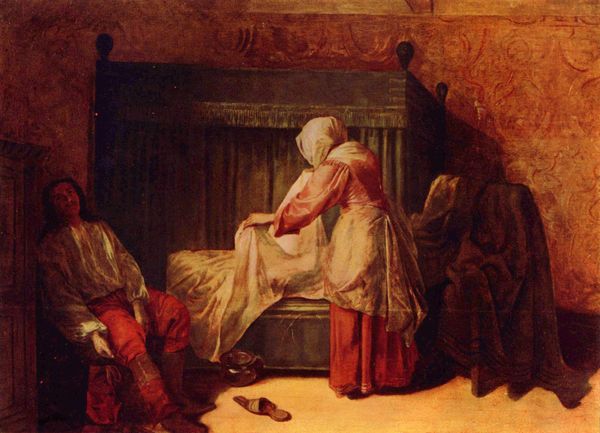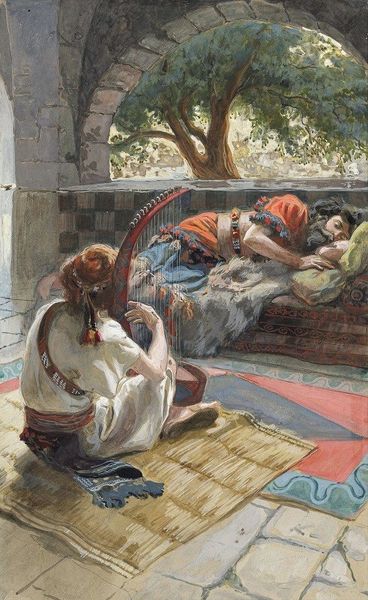
painting, oil-paint
#
portrait
#
painting
#
oil-paint
#
oil painting
#
underpainting
#
orientalism
#
human
#
painting painterly
#
genre-painting
#
sitting
#
watercolor
#
realism
Copyright: Public domain
Curator: Before us is Rudolf Ernst's oil painting, "Two Arabs Reading in a Courtyard." The specific date remains unknown, which invites us to consider it within the broader scope of his Orientalist period. What are your initial impressions? Editor: The overall palette feels sun-drenched, almost bleached. The light seems to soften everything, making it feel very relaxed and still. The craftsmanship is evident in the textiles; you can practically feel the textures of the fabrics and rug. Curator: Absolutely. And consider the loaded history of Orientalism itself. How do we reconcile the allure of these idealized scenes with the colonial gaze that often framed them? Ernst, though celebrated for his technical skill, perpetuated certain power dynamics through his artistic choices, right? Editor: That’s what strikes me. What was Ernst's material relationship to this scene? Did he source these fabrics and props, perhaps through trade networks built on unequal power structures? The painting becomes evidence of that relationship. It seems less about an actual lived reality, more like a staged fabrication. Curator: I agree. And it is precisely in acknowledging this that we can have a responsible engagement with works like this. By unpacking the social, economic and political conditions underpinning Ernst's artistic choices we recognize both the artistry and its inherent limitations. Editor: Yes. We also must question, how were these kinds of artworks consumed? For whom were these paintings made, and what desires or fantasies did they fulfill within their original cultural context? What did the paintings represent for the labor or cost invested? Curator: The setting is so carefully constructed to offer an insight to life, right? This wasn’t presented simply as “art,” it became part of the grand narratives the West built to frame, understand and ultimately control the East. Editor: I wonder too about the physical object of the book, what stories does that object hold. How does its presence, shape and value speak to the dynamics of literacy and the circulation of knowledge in this space? Curator: These are pivotal questions, leading us beyond the mere visual representation toward deeper socio-historical understandings. The figures depicted weren't free from broader systems of influence. The painter chooses to represent a constructed depiction of labor. Editor: Right, what labor went into creating the scene. By examining the production and reception of such works, we start seeing beyond just exotic imagery, confronting difficult historical truths. Curator: Indeed. Understanding is essential, not in dismissing them but approaching these with thoughtful criticism. Editor: It really challenges us to consider materiality and the social lives these pieces had and continue to hold.
Comments
No comments
Be the first to comment and join the conversation on the ultimate creative platform.
